Popular games for franchise Mystical Ninja
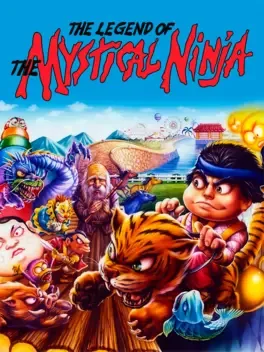
The Legend of the Mystical Ninja is a light-hearted action-adventure game for 1-2 players by Konami, and was released for the Super Nintendo Entertainment System in 1991. It is the first game in the Japanese video game series Ganbare Goemon to have a western release.

The story follows Goemon's struggles to prevent the Peach Mountain Shoguns gang from turning Japan into a Westernized fine arts theater. The plot calls for three cinematic musical features and battles between giant robots; like other Ganbare Goemon games, it is peppered with surrealist humor and anachronisms. The protagonist of Mystical Ninja is Goemon, a hot-blooded, kiseru-wielding ninja with blue, bushy hair based loosely on the legendary thief Ishikawa Goemon. The lord of Oedo asks him to find those who maimed Oedo Castle. Goemon lives in Oedo Town and is friends with Ebisumaru, a strange, gluttonous fat man who wears a blue bandana. Ebisumaru is defined as lazy and perverted. Their kunai-throwing friend Sasuke is a mechanical ninja (made by the Wise Man of Iga) who enjoys hot baths and Japanese tea. Rounding out the heroes is Yae, a fierce sword-wielding kunoichi, who happens upon Goemon's band in Zazen Town. The villains of the game hail from the organization Peach Mountain Shoguns and include a gang of four "weirdos" led by Spring Breeze Dancin' (Danshin Harukaze) and Kitty Lily (Margaret Ranko). They intend to transform Japan into a stage for their talents.
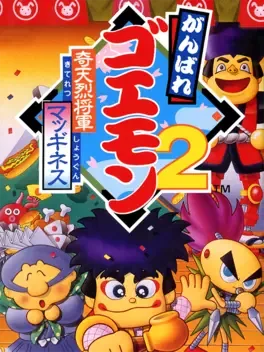
As you may have guessed from the number 2 in the title, this is the second SNES game in the popular blend of the adventure and jump and run genres which is the Goemon series. Again, you (and your partner, in 2 player mode) control Goemon, his friend Ebisu-Maru and, new to the bunch, robot Sasuke, through loads of action stages and villages. Another new feature comes with 3D boss fights, featuring the giant mech type robot called "Goemon Impact".
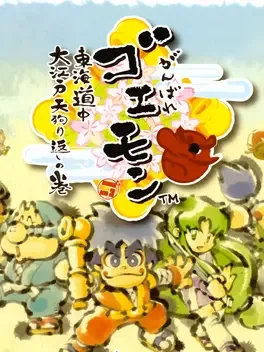
A Ganbare Goemon game released for the Nintendo DS on June 23, 2005 in Japan. Its release marked the revival of the series' medieval Japanese themes and quirky humor, as previous games had taken place in a futuristic setting or with a more serious tone.
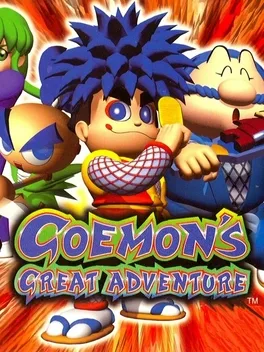
Goemon and all his friends are back in his greatest adventure yet! Goemon's Great Adventure combines classic Goemon platform action with an all-new twist. The evil time-traveling nun, Bismaru, has summoned Dochuki, a demon prince, to take over the Earth. But first, she wants to marry him! Can Goemon and his gang stop the demon? Can Dochuki escape the cloying clutches of the wacked-out nun? Will Ebisu ever beat his own dumpling eating record? It's an adventure you'll never forget!
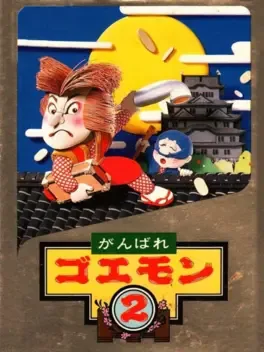
The second game in Konami's Ganbare Goemon series of bizarre action/brawler games based on historical figure Ishikawa Goemon. It was only released in Japan on January 4th 1989 on the Famicom.
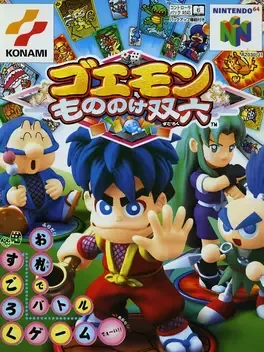
Goemon: Mononoke Sugoroku is a video game for the Nintendo 64, released in 1999. The game is based on the Goemon series and despite the series' relative popularity in the west for the system, the game was released only in Japan. The game is based on the Japanese board game Sugoroku, populated with Konami's array of Ganbare Goemon characters. Up to four players control two dice, and take them in turns to control Goemon, Ebisumaru, Sasuke, or Yae over pre-rendered boards that resemble previous locations in the Ganbare Goemon series.

Ganbare Goemon Gaiden 2: Tenka no Zaihou is a Role-Playing game, developed and published by Konami, which was released in Japan in 1992. This game is the first title that really defined the Goemon (Legend of the Mystical Ninja) series. It is a virtual atmosphere of a Japan where every myth and legend that ever came to exist are brought to life in this game, be it amazing clockwork machinery, Ice spirits that are out to haunt the player, or a trip down to hell for harming the Ojisan statues.

Ganbare Goemon: Ooedo Daikaiten is a Ganbare Goemon game released for the PlayStation on March 29, 2001. A villain named Ecorori kidnaps Omitsu, and it's up to Goemon and his crew to stop him. The game is extremely similar to Ganbare Goemon 2 for Super Famicom and Goemon's Great Adventure/Mystical Ninja 2 in that there's mostly sidescrolling levels, accompanied by some Impact bosses. Unlike previous Goemon games, which have used sprites or 3-D models for the characters, the characters are now represented by pre-rendered CGI, giving them a quasi-3-D look. Also, Yae is featured in her outfit that first appeared in Mononoke Suguroku.
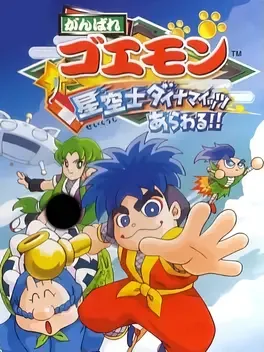
Ganbare Goemon: Seikuushi Dynamites Arawaru!! is a Ganbare Goemon game released for the Game Boy Color on December 21, 2000.
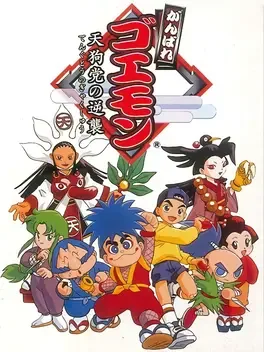
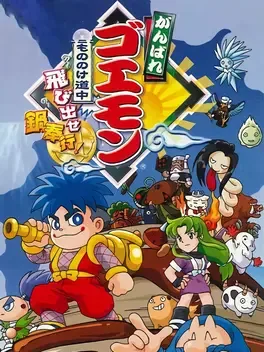
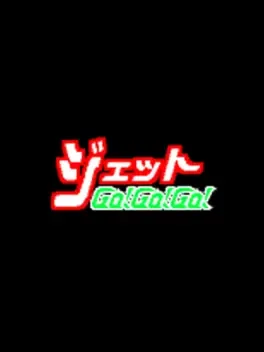
Mini Kyodai Robo Goemon Compact is a role-playing game for mobile phones, part of the Ganbare Goemon series. It was published by Konami and released in May 7, 2003 exclusively in Japan.
Ganbare Goemon: Dosukoi! Harite Ichiban is a fighting sumo game developed and published by Konami for mobile phones and released on December 16, 2002 in Japan. It is part of the Ganbare Goemon: Tsuukai Game Apli series, but was based on Ganbare Goemon 2: Kiteretsu Shougun Magginesu.
Ganbare Goemon: Hijutsu! Sansuu Juku is a quiz video game released for mobile phones. It was developed and published by Konami Mobile and released on November 14, 2002 in Japanese markets. It is the first video game in the Ganbare Goemon: Tsuukai Game Apli series.
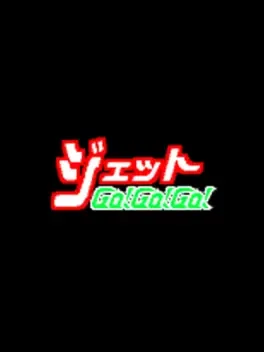
Ganbare Goemon: Jetto GO! GO! GO! is an action game developed and published by Konami for mobile phones and was released on March 13, 2003 in Japan. It is part of the Ganbare Goemon: Tsuukai Game Apli series.
Ganbare Goemon: Karakuri Kiteretsu Race is a racing mobile phone game from the Ganbare Goemon series which was developed and published by Konami and released in May 7, 2003 in Japan. It is part of the Ganbare Goemon: Tsuukai Game Apli series.
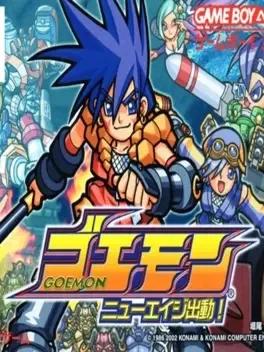
Goemon: New Age Shutsudou! gives the franchise a facelift, putting Goemon and his friends in a futuristic rendition of Japan, fending off a supernatural force threatening the city. Goemon: New Age Shutsudou! is a Japan only title in the Ganbare Goemon franchise. New Age Shutsudou is a semi-port/remake of Ganbare Goemon: Shin Sedai Shuumei, containing similar levels and plot to the PlayStation title. New Age Shutsudou was developed and published by Konami Corporation in 2002. The game (as well as Shin Sedai Shuumei) gives the Goemon universe a facelift. It takes place in futuristic Japan, Goemon is skinnier and sports a new hair-do, Ebisumaru is replaced with a shy girl who has a crush on Goemon named Ebisu, and Yae is replaced with Yui, a mermaid-like creature. The Impact scenes take place inside of a large mech. In terms of gameplay, Goemon: New Age Shutsudou! is a fairly traditional side-scrolling action platformer. The player controls either Goemon or Ebisu, attacking enemies with their respective weapons (which can be leveled up three times in terms of power), and gathering coins. Each level is fairly linear in comparison to earlier Ganbare Goemon titles, and at the end of each level the player is taken to a world map. Some levels differentiate from this formula. These levels put the player in control of different characters. There are side-scrolling shoot-em-up stages starring characters like Sasuke. The weapon power-up system still works identically here, the gameplay style is just shifted. Additionally, there are stages where the player takes control of Yui, a mermaid-like creature. These stages are underwater. New Age Shutsudou marks the return of the first person Impact scenes, which were previously in some of the Super Famicom Goemon games. These scenes put the player in control of a large mech, fighting other robots. The mech is immobile, but is able to melee attack, guard, and fire counter-attacking lasers.
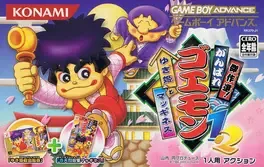
A compilation of the first two Super Famicom Goemon games.
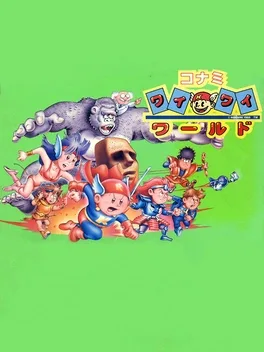
A difficult platformer with characters from the Konami world. You can play with Simon Belmont, Moai, Kong, Goemon, and others.
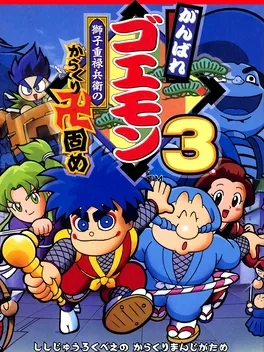
Third title in the Ganbare Goemon series of platform/adventure games which cast you as the heroic Goemon as he attempts to save feudal Japan from all sorts of wacky evildoers. This time around, a time-travelling machine threatens all of Japan and thus Goemon and co. must jump into the future to stop the machine. The game alternates between a top-down world map view in which your characters explore the gameworld and side-scrolling stages in which the main action lies. As in most games of the series there are also loads of mini-games and unique gameplay sequences such as maneuvering Goemon's giant mecha. The game continues the tradition of bizarre humor unique to the series, you can play as either Goemon or any of his 3 companions, Ebisumaru, Sasuke or Yae with each sporting unique weapons and abilities and also with their own dialogue options and cutscenes, which feature sitcom-like pre-recorded laughs for added wackiness.
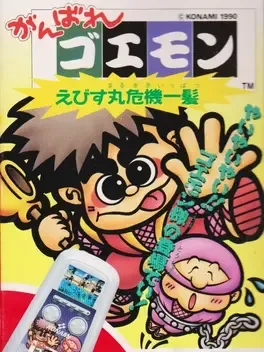
Ganbare Goemon: Ebisumaru Kiki Ippatsu is a portable electronic handheld game in the Ganbare Goemon series developed and published by Konami in 1990 in Japan. In this LCD game, Goemon has to rescue Ebisumaru who has been captured by evildoers.
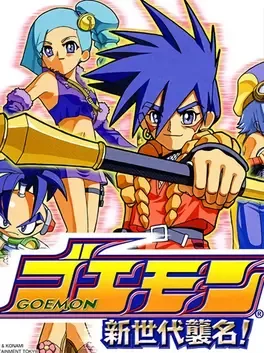
Goemon: Shin Sedai Shūmei! is a game in the Ganbare Goemon series released for the PlayStation on December 20, 2001 in Japan. It is a spin-off of the original Ganbare Goemon series. In February 2002, a conversion of this game was released for the Game Boy Advance titled Goemon: New Age Shutsudō!, with various modifications and cuts made from the original PlayStation version. Neither version was released outside of Japan.
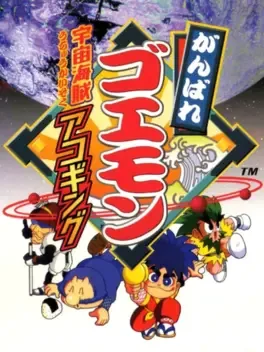
Ganbare Goemon: Tentekomai-mai Meikyu-kan is a labyrinth video game developed and published by Konami Mobile Japan and released on mobile phones on May 7, 2003 in Japanese Market. It is the fifth and the last title in the Ganbare Goemon: Tsuukai Game Apli series.